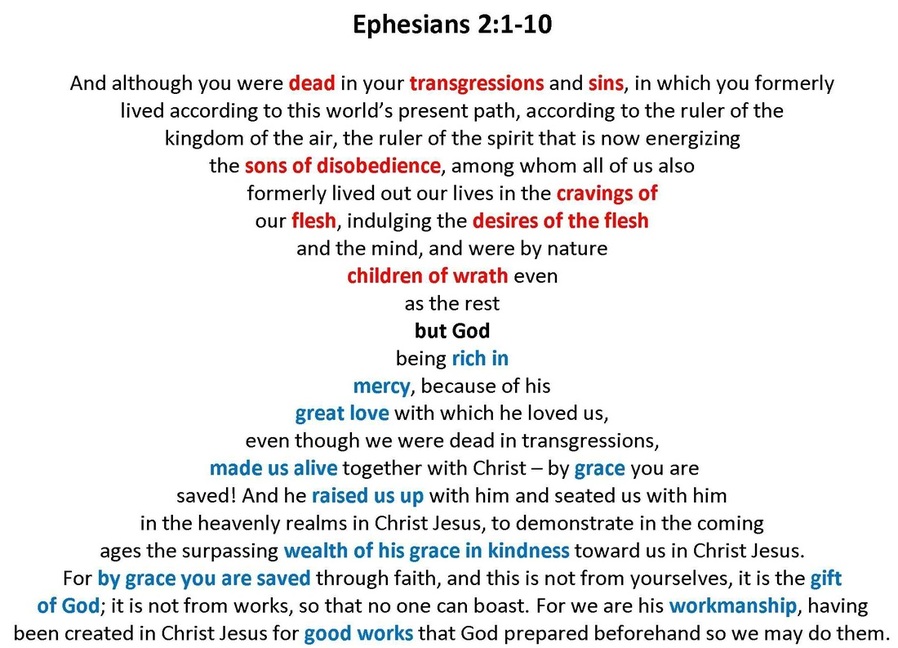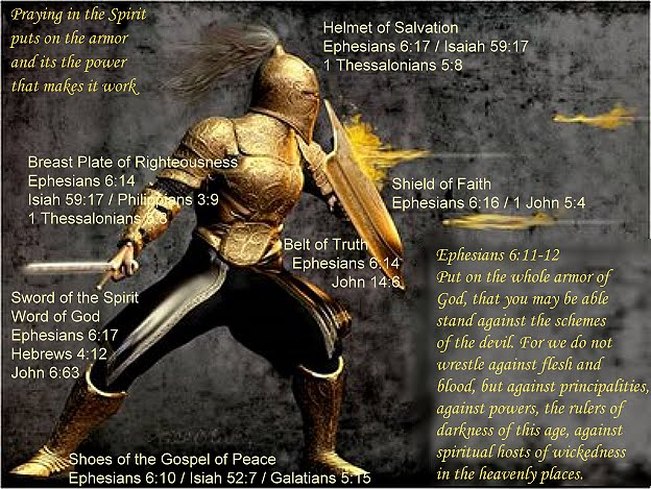Paul's letter to the Ephesians

Ephesus was the most important city in western Asia Minor (now Turkey). Because it was at an intersection of major trade routes, it became a commercial center. It also boasted a pagan temple dedicated to the Roman goddess Diana (Greek Artemis). Paul made Ephesus a center for evangelism for about three years.

This letter was probably not sent merely to the church at Ephesus but also to the various churches in the province of Asia, where Paul conducted his third missionary journey.

The more widely held position is that Paul wrote this letter about A.D. 60, during his two year imprisonment in Rome.
Unlike several of Paul's other letter, Ephesians does not address any particular error or heresy. Paul wrote to help his readers better understand the dimensions of God's eternal Purpose and grace and come to appreciate the high goals God has for the church. One of Paul's themes is that of unity - all Christians are one family in Jesus, and they should act with love toward each other. He also writes about the church - not a church building, but the church that is made up of all Christians through all the ages.
Unlike several of Paul's other letter, Ephesians does not address any particular error or heresy. Paul wrote to help his readers better understand the dimensions of God's eternal Purpose and grace and come to appreciate the high goals God has for the church. One of Paul's themes is that of unity - all Christians are one family in Jesus, and they should act with love toward each other. He also writes about the church - not a church building, but the church that is made up of all Christians through all the ages.


I. Greetings (1:1-2)
II. The Glory and Headship of Jesus Christ (1:3-14)
III. Prayer That Christians May Realize God's Purpose and Power (1:15-23)
IV. Steps Toward the Fulfillment of God's Purpose (2:1-3:21)
V. Ways to Fulfill God's Purpose in the Church (4:1-6:20)
VI. Conclusion (6:21-24)
II. The Glory and Headship of Jesus Christ (1:3-14)
III. Prayer That Christians May Realize God's Purpose and Power (1:15-23)
IV. Steps Toward the Fulfillment of God's Purpose (2:1-3:21)
V. Ways to Fulfill God's Purpose in the Church (4:1-6:20)
VI. Conclusion (6:21-24)

In chapters 1-3, Paul teaches about the unity of believers. These are the truths and blessings that all believers have in common. He wrote that all Christians are “adopted as sons through Jesus Christ” (1:5).
All believers are, “redeemed through His blood” (1:7), and “sealed by the Holy Spirit” (1:13). Paul continues on to clear up one of the most misconceived and/or often ignored subject even to this day, “Salvation by Grace”. He wrote that salvation is by the “Grace” of God and that it is through “Faith”, and that no one can contribute to salvation, in any way, even with good deeds (2:8-9).
All believers are, “redeemed through His blood” (1:7), and “sealed by the Holy Spirit” (1:13). Paul continues on to clear up one of the most misconceived and/or often ignored subject even to this day, “Salvation by Grace”. He wrote that salvation is by the “Grace” of God and that it is through “Faith”, and that no one can contribute to salvation, in any way, even with good deeds (2:8-9).

In chapters 4-6, Paul encourages the believer to “walk in a manner worthy of the calling”. Every believer has a responsibility to live as servants of Jesus Christ. In these chapters, Paul teaches that it takes hard work to be in unity with others; and that we are to be “imitators of God” (5:1). He mentions imperative truths and advice for well functioning families, including husbands and wives who upon the oath of marriage become as “one flesh” (5:31). In chapter 6, Paul instructs believers how to prepare for spiritual battle by dressing in the “full armor of God” (6:11). Prayer is the key weapon of the Christian soldier. He emphasizes his principle with the repeated statement “stand firm”.
